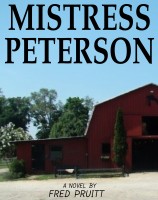Direct Translation via Google Translate. Edited.
by Leonid Tsukanov
[REGNUM] The key goal of the Israeli Operation Lion Force was named the dismantling of the Iranian nuclear program.
| A key goal, anyway. Another key goal was ending Iran’s ability to be a military threat to Israel’s existence, and a third — going beyond Lion Forces — was to end the ability of Iran’s alliance with Hamas, Hezbollah, and the Houthis as a military threat to Israel’s existence. |
More precisely, its military component, the existence of which official Tel Aviv Jerusalem has been convinced of for many years.
 Not just Israel… Not just Israel…
Later, the Americans, who joined in the bombing of Iranian nuclear facilities, used the same considerations to explain their actions.
However, after the completion of the active phase of the operation, the victorious reports gave way to reflections on how real the damage to the Iranian nuclear industry was, and whether Washington and Tel Aviv, with their “decisive throw,” brought Tehran closer to obtaining its own nuclear arsenal.
WAYS TO GET RICH
According to the provisions of the “nuclear deal” concluded between Iran and a group of guarantors (Russia, China, the USA, Germany, Great Britain, the EU) in 2015, Tehran had the right to enrich about 300 kg of uranium to a level no higher than 3.7%. This symbolic threshold was quite sufficient for the development of the “peaceful atom” and conducting scientific research without the possibility of clandestine work on nuclear weapons.
With the collapse of the “deal” after the US withdrew from it in 2017, Iran began a gradual reduction in its commitments to its national nuclear program, reducing the frequency of international inspections and increasing the rate of enrichment, unilaterally raising the threshold several times.
According to the latest verified IAEA measurements (February 2025), of the 7.5 thousand kg of enriched stockpiles within the deal, less than 40% (2.9 thousand kg) were attributed to Tehran.
Moreover, at least 274 kg was enriched to 60%, which in theory gives Iran the ability to quickly increase these stockpiles to weapons-grade levels (enrichment of 90% or more).
The June strikes by Israel and the US on enrichment plants in Natanz and Isfahan, at first glance, set the process back. Washington emphasizes that the air raids allegedly managed to destroy the entire infrastructure for the production of metallic uranium in Isfahan, which will require Tehran to make “serious investments” in the near future to restore it.
The Israelis add that at least 13,000 centrifuges were damaged, both by direct missile hits and by power surges at enrichment plants.
However, the IAEA is less optimistic in its assessments. Rafael Grossi believes that Iran is capable of quickly - literally in a few months - replacing the centrifuges destroyed as a result of Israeli strikes. Using, among other things, what was stored in underground warehouses "in unspecified quantities." And over the next year, it can also modernize them, once again increasing the rate of enrichment work.
Predicting the timing of a new breakthrough will be extremely problematic, especially since, after a series of scandals with IAEA inspectors, Tehran has decided to dismantle the Agency's monitoring systems at its nuclear facilities.
UNEXPECTED EARTHQUAKE
A separate topic for discussion is the extent of damage to Iran's "nuclear perimeter." Despite the fact that the facilities in Natanz, Isfahan, Arak, and Fordow were subjected to intensive strikes at least three times in two weeks, the damage was inflicted mainly on above-ground buildings, while the underground infrastructure was practically unharmed.
| That’s certainly one perspective. But given how thoroughly Mossad was embedded in Iran’s nuclear program since at least 2010, it’s possible their estimates if the damage are more accurate than some pundit sitting somewhere in Russia. And if not, they will discover the hard way, no? |
Even the use of GBU-57 bunker busters by the US against the Fordow facility did not result in the destruction of the underground storage facility for highly enriched uranium, as evidenced by numerous radiological measurements in Iran and neighboring countries. If the underground storage facility with enriched uranium had suffered a direct hit, it would have been impossible to hide the traces of the man-made disaster.
However, as experts note, the attack provoked a "migration" of Iranian stockpiles. About 400 kg of highly enriched uranium disappeared from radars, which the Iranians allegedly transported from Fordow to an unknown location in advance.
Considering that IAEA inspections in the country have been stopped, it is not yet possible to determine the new storage location of the disputed stockpiles.
The unexpected earthquake (June 20, magnitude 5.2) in the province of Semnan, where a large number of facilities are located, added to the controversy. It was noted that its epicenter was at a depth of approximately 10 km, which only spurred discussions about the start of secret underground nuclear weapons tests in Iran.
However, the West did not develop the conspiracy theory. Especially since to create such shocks it would be necessary to detonate a warhead with a capacity of up to 200 kilotons. And this is many times greater than even the military capabilities attributed to Tehran.
WEAK SPOT
Perhaps the greatest damage to the Iranian nuclear program has been not in equipment and consumables, but in people.
The Israeli army's General Staff insists that it was able to eliminate at least nine leading scientists from the Iranian "nuclear project", at least five seconded figures, officers supervising intelligence and the Islamic Revolutionary Guard Corps.
Tehran, however, acknowledges the deaths of only six of them and emphasizes that all of those killed worked in the peaceful sector or were theorists.
Fierce debates continue in the West: did the dead nuclear scientists manage to pass on their accumulated knowledge or did Tehran not believe until the very end that Israel would hunt the scientists so actively? Especially since almost five years have passed since the previous major operation to eliminate Iranian nuclear scientists.
Either way, the one-time loss of a large number of high-level specialists will limit the capabilities of the Iranian nuclear sector for some time.
On the other hand, the patriotic impulse that has emerged in Iran in the wake of the US-Israeli attacks is driving a sharp rise in demand for science education among young people, according to universities that are seeing an influx of motivated applicants.
If Tehran manages to ride this wave, it will be able to saturate the industry with new personnel in the next decade.
BACK TO THE ROOTS
Although Iran has stopped publicly discussing a new "nuclear deal" after the US-Israeli operation, the authorities have left little room for maneuver.
The Iranian diplomatic corps maintains alternating contacts with the Europeans and Washington (although the White House denies the fact of these interactions), and also works closely with non-Western intermediaries in the form of Russia and China.
Tehran does not hide that it is still interested in dispelling the myths surrounding its "atomic dossier", although it makes a reservation that it will continue to enrich uranium within the limits that it deems necessary. And if the situation requires it, it is ready to continue the confrontation with the United States.
Even though concluding a new deal still meets the interests of the Masoud Pezeshkian government, official Tehran’s excessive attention to the diplomatic track could be perceived in the current circumstances as a sign of weakness and an admission of defeat in the recent conflict.
For this reason, it is important for Iranian elites to continue to balance, demonstrating a willingness to negotiate, but taking into account their own compelling interests.
Moreover, Iran even has some trump cards in its hands - for example, a draft law on the country's withdrawal from the Treaty on the Non-Proliferation of Nuclear Weapons, following the example of the DPRK. It has already been repeatedly put on the agenda, but has not received support. If the guarantors put too much pressure on Tehran, it may well give the document a go.
| That won’t protect Iran from Israel’s bombs, or America’s. Neither Iraq nor Syria’s nuclear programs were protected from Israel’s bombs, after all. |

|











